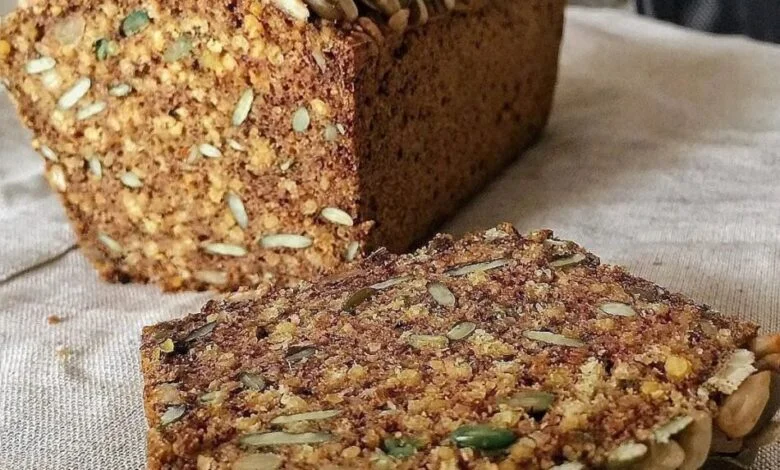
A vegan diet has numerous benefits, and here are some GOOD points :
Health Benefits:
Nutrient-Rich: A well-balanced vegan diet can provide all the necessary nutrients, including vitamins, minerals, and fiber, promoting overall health.
Heart Health: Studies suggest that a vegan diet may lower the risk of heart disease by reducing cholesterol levels and blood pressure.
Weight Management: Many people find that adopting a vegan diet helps with weight management due to lower calorie intake and increased consumption of whole, plant-based foods.
Environmental Impact:
Reduced Carbon Footprint: Animal agriculture is a significant contributor to greenhouse gas emissions. A vegan diet helps reduce your carbon footprint and combat climate change.
Conservation of Resources: Producing plant-based foods generally requires fewer natural resources like water and land compared to animal farming, contributing to sustainable resource use.
Ethical Considerations:
Animal Welfare: Choosing a vegan lifestyle aligns with ethical considerations, promoting the well-being of animals and avoiding their exploitation for food.
Reduced Animal Suffering: By opting for plant-based alternatives, individuals contribute to the reduction of animal suffering associated with factory farming and other industrial practices.
Diverse Culinary Options:
Creative Cooking: Adopting a vegan diet encourages exploration of diverse and creative cooking techniques, using a wide range of fruits, vegetables, grains, nuts, and seeds.
Global Cuisine: Veganism opens up the opportunity to explore and appreciate a variety of global cuisines that are naturally plant-based, fostering a rich and flavorful culinary experience.
Disease Prevention:
Cancer Prevention: Some studies suggest that a vegan diet may lower the risk of certain cancers, including colorectal and breast cancer.
Type 2 Diabetes: Plant-based diets have been linked to a reduced risk of type 2 diabetes due to their positive effects on insulin sensitivity and blood sugar levels.
Economic Considerations:
Cost-Effective: A vegan diet can be cost-effective, as plant-based staples like beans, lentils, and grains are often more affordable than meat and dairy products.
Reduced Healthcare Costs: By promoting overall health and reducing the risk of chronic diseases, a vegan diet may lead to lower healthcare costs in the long run.
Community and Social Impact:
Supporting Sustainable Practices: Choosing vegan options supports businesses and practices that prioritize sustainability, contributing to a positive societal shift towards more eco-friendly choices.
Community Engagement: The growing popularity of veganism has led to the emergence of a vibrant and supportive community that shares recipes, tips, and encouragement.
Creating a delicious yeast vegan bread involves a combination of thoughtful ingredient selection, precise measurements, and proper techniques. Begin with high-quality flour, preferably a mix of whole wheat and all-purpose flour for a balance of flavor and texture. In a large mixing bowl, combine the flour with a pinch of salt, ensuring even distribution. To activate the yeast, warm non-dairy milk (such as almond, soy, or oat milk) to a temperature that’s comfortable to the touch and mix it with a teaspoon of sugar. Sprinkle active dry yeast over the milk mixture and let it sit for about 5-10 minutes until it becomes frothy.
Once the yeast is activated, incorporate it into the flour mixture, creating a dough. Knead the dough on a floured surface for about 10 minutes until it becomes smooth and elastic. Allow the dough to rise in a covered bowl for at least an hour, or until it has doubled in size. Punch down the risen dough, shaping it into a loaf, and place it into a greased loaf pan for a second rise.
Before baking, brush the loaf with a mixture of non-dairy milk and a touch of agave syrup for a glossy finish. Bake in a preheated oven until the bread is golden brown and sounds hollow when tapped. The result is a beautifully risen, soft on the inside, and crusty on the outside vegan bread with a rich, yeasty flavor.
To enhance the flavor profile, consider adding ingredients like roasted garlic, dried herbs, or seeds to the dough. These additions not only contribute to the bread’s taste but also provide a delightful texture and visual appeal. Serve this delicious yeast vegan bread warm with vegan butter, olive oil, or your favorite plant-based spread for a satisfying and wholesome experience. Whether enjoyed on its own or used as a base for sandwiches, this bread is sure to become a staple in your vegan culinary repertoire.
DELICIOUS YEAST VEGAN BREAD

Ingredients:
1 cup green buckwheat
1 glass of millet
1/4 cup flax seeds
1 glass of water
2 tablespoons coconut oil (optional)
1 teaspoon. soda
1/3 cup sunflower seeds
1/3 cup pumpkin seeds
1/4 cup chia seeds
2 teaspoons cumin seeds
1 teaspoon turmeric
1 teaspoon cardamom
1 teaspoon coriander
1-2 teaspoons of salt (according to your taste)
Preparation:⠀
1. Wash buckwheat and millet and soak them in water for at least 5 hours.
2. Grind the flaxseed and soak it in 1 glass of water, let it swell for 20 minutes.
3. Place the soaked green buckwheat and millet in a blender after draining the water, but without rinsing, grind until smooth. There may be unground millet particles or even whole ones, but this is good, the structure of the bread will be more interesting.
4. Pour the mixture into a bowl. Add the soaked and swollen ground flaxseeds.
Add 3-5 tablespoons coconut oil (optional)
Press the baking powder and add it to the dough.
5. Wash the sunflower and pumpkin seeds and mix them into the dough. Stir in chia seeds.
6. Grind 1 teaspoon of cumin seeds in the coffee grinder and mix 1 teaspoon of cumin seeds into the dough.
7. Add: turmeric, coriander, cardamom and salt (adjust to taste to get a slightly salty taste).
8. Mix everything, pour the dough into a mold (I use a special one for bread, but for baking you can use any variety, grease the mold with oil)
9. Sprinkle sunflower, pumpkin and flax seeds on top, press them a little into the dough to create a delicious seed coat.
10. Bake at 180* for 1 hour.
If you see the crust cracking during the baking process, open the oven and spray the bread and oven walls with water from a spray bottle.
11. When the bread is baked, remove it from the pan, wrap it in a towel and leave it until it cools completely.
⠀
Enjoy your meal!


